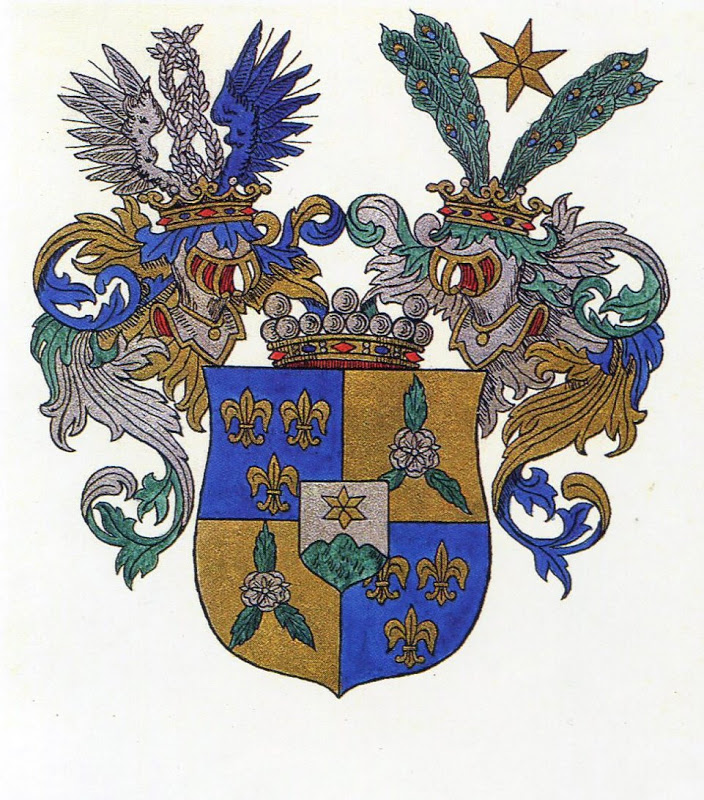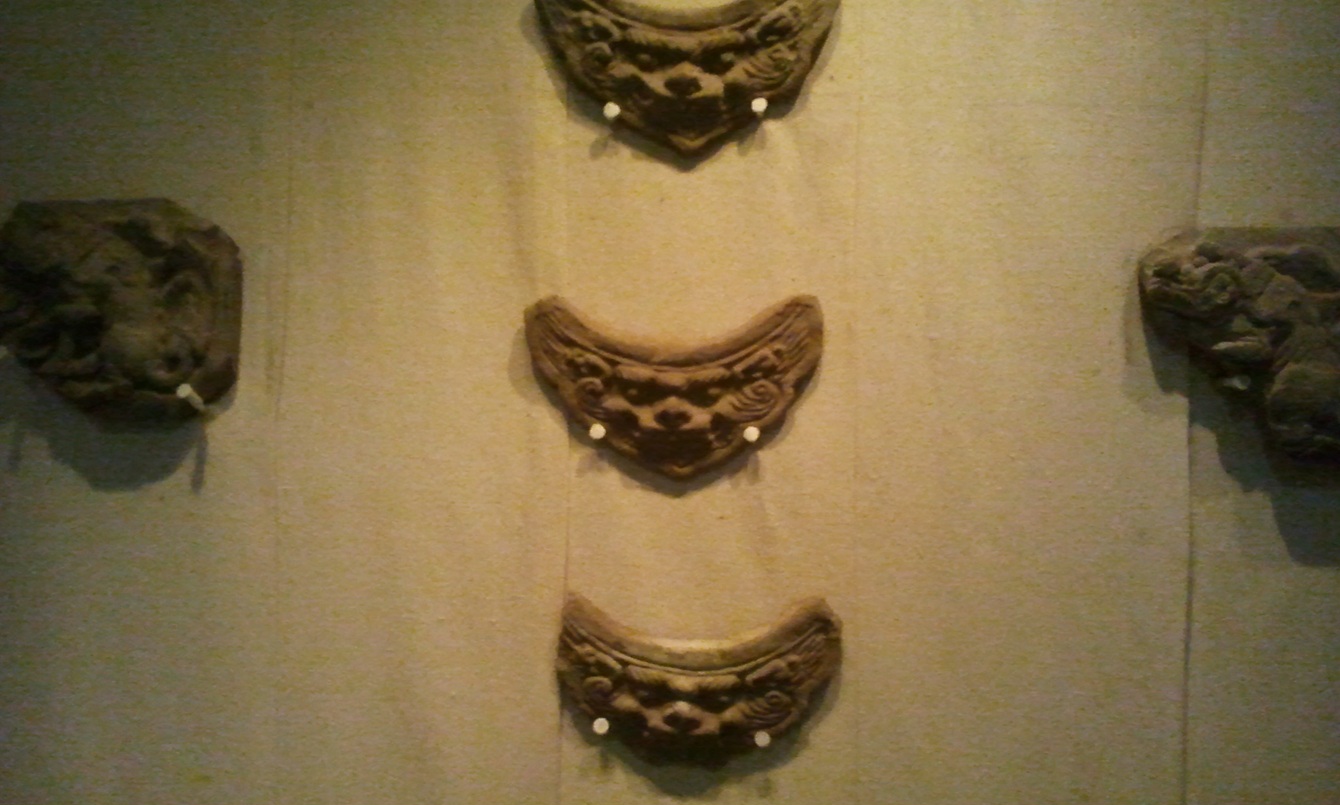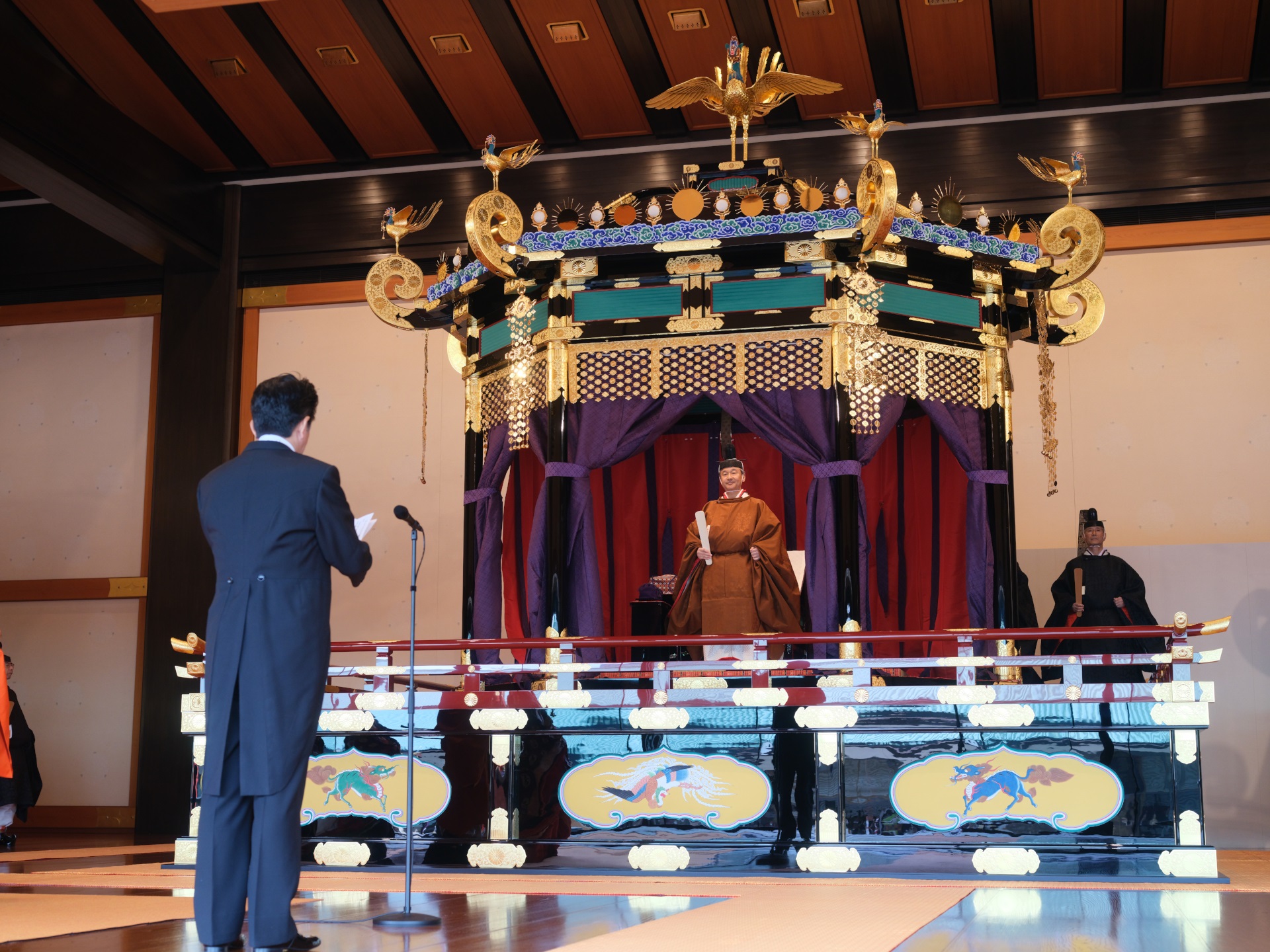|
Roman Von Ungern-Sternberg
Nikolai Robert Maximilian Freiherr von Ungern-Sternberg (russian: link=no, Роман Фёдорович фон Унгерн-Штернберг, translit=Roman Fedorovich fon Ungern-Shternberg; 10 January 1886 – 15 September 1921), often referred to as Roman von Ungern-Sternberg or Baron Ungern, was an anticommunist general in the Russian Civil War and then an independent warlord who intervened in Mongolia against China. A part of the Russian Empire's Baltic German minority, Ungern was an ultraconservative monarchist who aspired to restore the Russian monarchy after the 1917 Russian Revolutions and to revive the Mongol Empire under the rule of the Bogd Khan. His attraction to Vajrayana Buddhism and his eccentric, often violent, treatment of enemies and his own men earned him the sobriquet "the Mad Baron" or "the Bloody Baron". In February 1921, at the head of the Asiatic Cavalry Division, Ungern expelled Chinese troops from Mongolia and restored the monarchic power of the Bog ... [...More Info...] [...Related Items...] OR: [Wikipedia] [Google] [Baidu] |
Freiherr
(; male, abbreviated as ), (; his wife, abbreviated as , literally "free lord" or "free lady") and (, his unmarried daughters and maiden aunts) are designations used as titles of nobility in the German-speaking areas of the Holy Roman Empire and in its various successor states, including Austria, Prussia, Bavaria, Liechtenstein, Luxembourg, etc. Traditionally, it denotes the titled rank within the nobility above ' ( knight) and ' (nobility without a specific title) and below ' ( count, earl). The title superseded the earlier medieval form, '. It corresponds approximately to the English ''baron'' in rank. The Duden orthography of the German language references the French nobility title of '' Baron'', deriving from the latin-germanic combination ''liber baro'' (which also means "free lord"), as corresponding to the German "Freiherr"; and that ''Baron'' is a corresponding salutation for a ''Freiherr''. Duden; Definition of ''Baron, der'' (in German)/ref> ' in the feudal sys ... [...More Info...] [...Related Items...] OR: [Wikipedia] [Google] [Baidu] |
Warlord
A warlord is a person who exercises military, economic, and political control over a region in a country without a strong national government; largely because of coercive control over the armed forces. Warlords have existed throughout much of history, albeit in a variety of different capacities within the political, economic, and social structure of states or ungoverned territories. The term is most often applied to China in the mid-19th century and the early 20th century. The term can also be used for any supreme military leader. Historical origins and etymology The first appearance of the word "warlord" dates to 1856, when used by American philosopher and poet Ralph Waldo Emerson in a highly critical essay on the aristocracy in England, "Piracy and war gave place to trade, politics and letters; the war-lord to the law-lord; the privilege was kept, whilst the means of obtaining it were changed." During the First World War World War I (28 July 1914 11 November 19 ... [...More Info...] [...Related Items...] OR: [Wikipedia] [Google] [Baidu] |
Bolsheviks
The Bolsheviks (russian: Большевики́, from большинство́ ''bol'shinstvó'', 'majority'),; derived from ''bol'shinstvó'' (большинство́), "majority", literally meaning "one of the majority". also known in English as the Bolshevists,. It signifies both Bolsheviks and adherents of Bolshevik policies. were a far-left, revolutionary Marxist faction founded by Vladimir Lenin that split with the Mensheviks from the Marxist Russian Social Democratic Labour Party (RSDLP), a revolutionary socialist political party formed in 1898, at its Second Party Congress in 1903. After forming their own party in 1912, the Bolsheviks took power during the October Revolution in the Russian Republic in November 1917, overthrowing the Provisional Government of Alexander Kerensky, and became the only ruling party in the subsequent Soviet Russia and later the Soviet Union. They considered themselves the leaders of the revolutionary proletariat of Russia. Their bel ... [...More Info...] [...Related Items...] OR: [Wikipedia] [Google] [Baidu] |
Ulaanbaatar
Ulaanbaatar (; mn, Улаанбаатар, , "Red Hero"), previously anglicized as Ulan Bator, is the capital and most populous city of Mongolia. It is the coldest capital city in the world, on average. The municipality is located in north central Mongolia at an elevation of about in a valley on the Tuul River. The city was originally founded in 1639 as a nomadic Buddhist monastic center, changing location 28 times, and was permanently settled at its current location in 1778. During its early years, as Örgöö (anglicized as Urga), it became Mongolia's preeminent religious center and seat of the Jebtsundamba Khutuktu, the spiritual head of the Gelug lineage of Tibetan Buddhism in Mongolia. Following the regulation of Qing-Russian trade by the Treaty of Kyakhta in 1727, a caravan route between Beijing and Kyakhta opened up, along which the city was eventually settled. With the collapse of the Qing Empire in 1911, the city was a focal point for independence efforts, le ... [...More Info...] [...Related Items...] OR: [Wikipedia] [Google] [Baidu] |
Occupation Of Mongolia
The occupation of Outer Mongolia by the Beiyang government of the Republic of China after the revocation of Outer Mongolian autonomy () began in October 1919 and lasted until 18 March 1921, when Chinese troops in Urga were routed by Baron Roman von Ungern-Sternberg's White Russian (Buryats, Russians etc.) and Mongolian forces. These, in turn, were defeated by the Red Army and its Mongolian allies by June 1921. Although the Beiyang government abolished the autonomy of the Bogd Khanate of Mongolia in Outer Mongolia and then expanded its occupation to include Uryankhay Krai (Tuva), it was unable to consolidate its rule over both regions. Background In December 1911 during the Xinhai Revolution, Outer Mongolia declared independence from the Qing dynasty in the Mongolian Revolution of 1911. Mongolia became a ''de facto'' absolute theocratic monarchy led by the Bogd Khan. However, the newly established Republic of China claimed inheritance of all territories held by the Qing ... [...More Info...] [...Related Items...] OR: [Wikipedia] [Google] [Baidu] |
Sobriquet
A sobriquet ( ), or soubriquet, is a nickname, sometimes assumed, but often given by another, that is descriptive. A sobriquet is distinct from a pseudonym, as it is typically a familiar name used in place of a real name, without the need of explanation, and it often becomes more familiar than the original name. The term ''sobriquet'' may apply to the nickname for a specific person, group of people, or place. Examples are "Emiye Menelik", a name of Emperor Menelik II of Ethiopia, who was popularly and affectionately recognized for his kindness ("emiye" means "mother" in Amharic); "Genghis Khan", who now is rarely recognized by his original name Temüjin; and Mohandas Gandhi, who is better known as " Mahatma" Gandhi ("mahatma" means "great soul" in Sanskrit). Well-known places often have sobriquets, such as New York City, often referred to as the " Big Apple". Etymology The modern French spelling is . Two early variants of the term are found: and . The first early spelling v ... [...More Info...] [...Related Items...] OR: [Wikipedia] [Google] [Baidu] |
Vajrayana
Vajrayāna ( sa, वज्रयान, "thunderbolt vehicle", "diamond vehicle", or "indestructible vehicle"), along with Mantrayāna, Guhyamantrayāna, Tantrayāna, Secret Mantra, Tantric Buddhism, and Esoteric Buddhism, are names referring to Buddhist traditions associated with Tantra and "Secret Mantra", which developed in the medieval Indian subcontinent and spread to Tibet, Nepal, other Himalayan states, East Asia, and Mongolia. Vajrayāna practices are connected to specific lineages in Buddhism, through the teachings of lineage holders. Others might generally refer to texts as the Buddhist Tantras. It includes practices that make use of mantras, dharanis, mudras, mandalas and the visualization of deities and Buddhas. Traditional Vajrayāna sources say that the tantras and the lineage of Vajrayāna were taught by Śākyamuni Buddha and other figures such as the bodhisattva Vajrapani and Padmasambhava. Contemporary historians of Buddhist studies meanwhile argue t ... [...More Info...] [...Related Items...] OR: [Wikipedia] [Google] [Baidu] |
Bogd Khan
Bogd Khan, , ; ( – 20 May 1924) was the khan of the Bogd Khaganate from 1911 to 1924, following the state's ''de facto'' independence from the Qing dynasty of China after the Xinhai Revolution. Born in Tibet, he was the third most important person in the Tibetan Buddhist hierarchy as the 8th Jebtsundamba Khutuktu, below only the Dalai Lama and Panchen Lama, and therefore also known as the "Bogdo Lama". He was the spiritual leader of Outer Mongolia's Tibetan Buddhism. His wife Tsendiin Dondogdulam, the Ekh Dagina (' Dakini Mother'), was believed to be a manifestation of White Tara. Life The future Bogd Khan was born in 1869 in the area of Lhasa, in a family of a Tibetan official. He was born as Agvaan Luvsan Choijinnyam Danzan Vanchüg. His father, Gonchigtseren, was an accountant at the 12th Dalai Lama's court. The boy was officially recognized as the new incarnation of the Bogd Gegen in Potala in the presence of the 13th Dalai Lama and the Panchen Lama. The new ... [...More Info...] [...Related Items...] OR: [Wikipedia] [Google] [Baidu] |
Mongol Empire
The Mongol Empire of the 13th and 14th centuries was the largest contiguous land empire in history. Originating in present-day Mongolia in East Asia, the Mongol Empire at its height stretched from the Sea of Japan to parts of Eastern Europe, extending northward into parts of the Arctic; eastward and southward into parts of the Indian subcontinent, attempted invasions of Southeast Asia and conquered the Iranian Plateau; and westward as far as the Levant and the Carpathian Mountains. The Mongol Empire emerged from the unification of several nomadic tribes in the Mongol homeland under the leadership of Temüjin, known by the more famous title of Genghis Khan (–1227), whom a council proclaimed as the ruler of all Mongols in 1206. The empire grew rapidly under his rule and that of his descendants, who sent out invading armies in every direction. The vast transcontinental empire connected the East with the West, and the Pacific to the Mediterranean, in an enforced '' Pax M ... [...More Info...] [...Related Items...] OR: [Wikipedia] [Google] [Baidu] |
Russian Revolutions
The Russian Revolution was a period of political and social revolution that took place in the former Russian Empire which began during the First World War. This period saw Russia abolish its monarchy and adopt a socialist form of government following two successive revolutions and a bloody civil war. The Russian Revolution can also be seen as the precursor for the other European revolutions that occurred during or in the aftermath of WWI, such as the German Revolution of 1918. The Russian Revolution was inaugurated with the February Revolution in 1917. This first revolt focused in and around the then-capital Petrograd (now Saint Petersburg). After major military losses during the war, the Russian Army had begun to mutiny. Army leaders and high ranking officials were convinced that if Tsar Nicholas II abdicated, the domestic unrest would subside. Nicholas agreed and stepped down, ushering in a new government led by the Russian Duma (parliament) which became the Russian Provi ... [...More Info...] [...Related Items...] OR: [Wikipedia] [Google] [Baidu] |
Russian Monarchy
This is a list of all reigning monarchs in the history of Russia. It includes the princes of medieval Rus′ state (both centralised, known as Kievan Rus′ and feudal, when the political center moved northeast to Vladimir and finally to Moscow), tsars, and emperors of Russia. The list begins with the semi-legendary prince Rurik of Novgorod, sometime in the mid 9th century ( 862) and ends with emperor Nicholas II who abdicated in 1917, and was executed with his family in 1918. The vast territory known today as Russia covers an area that has been ruled by various polities, including Kievan Rus', the Grand Duchy of Moscow, the Tsardom of Russia and the Russian Empire, and the sovereigns of these many nations and throughout their histories have used likewise as wide a range of titles in their positions as chief magistrates of a country. Some of the earliest titles include ''kniaz'' and '' velikiy kniaz'', which mean "prince" and "grand prince" respectively but are often ... [...More Info...] [...Related Items...] OR: [Wikipedia] [Google] [Baidu] |
Monarchist
Monarchism is the advocacy of the system of monarchy or monarchical rule. A monarchist is an individual who supports this form of government independently of any specific monarch, whereas one who supports a particular monarch is a royalist. Conversely, the opposition to monarchical rule is referred to as republicanism. Depending on the country, a royalist may advocate for the rule of the person who sits on the throne, a regent, a pretender, or someone who would otherwise occupy the throne but has been deposed. History Monarchical rule is among the oldest political institutions. The similar form of societal hierarchy known as chiefdom or tribal kingship is prehistoric. Chiefdoms provided the concept of state formation, which started with civilizations such as Mesopotamia, Ancient Egypt and the Indus Valley civilization. In some parts of the world, chiefdoms became monarchies. Monarchs have generally ceded power in the modern era, having substantially diminished since Wor ... [...More Info...] [...Related Items...] OR: [Wikipedia] [Google] [Baidu] |





_(8697431158).jpg)



